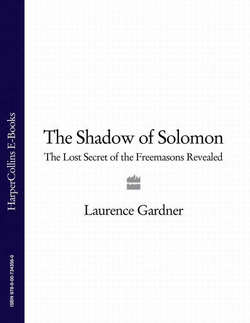Читать книгу The Shadow of Solomon: The Lost Secret of the Freemasons Revealed - Laurence Gardner - Страница 25
Gravity on a Plate
ОглавлениеThe greatest of all misfortunes to settle upon the Royal Society followed Isaac Newton’s arrival on the scene in 1672. From the very beginning, Newton and Hooke were on a wrong footing, which began with a disagreement over light refraction; also because Newton lodged a formal objection to Hooke’s fee-exempt status as Curator. After only a few months, Newton threatened to leave the Society, but the Secretary, intelligence agent Henry Oldenburg, pleaded for him to stay, waiving his dues too, much to the annoyance of the other Fellows.
A major argument ensued in 1675 when Newton gave a lecture entitled Discourse on Colour, claiming originality when, as Robert Hooke stated, ‘The main of it was contained in Micrographia.’ This set Oldenburg firmly against Hooke, leading to regular disputes. In 1678, Oldenburg died and Robert Hooke was elected to become the new Secretary, which upset Newton even further.
Isaac Newton was a man of incredible talent and, like Boyle, Wilkins, Ashmole and others, he was an ardent alchemist. He was, however, a curious character and the others could not fathom him at all. Having embarked on a translation of the Emerald Text of Hermes, Newton recalled from his youth that phoenix was an old Graeco-Phoenician word for ‘crimson’, and his quest for the great enlightenment led to a new decoration of his quarters—crimson furniture, carpets, curtains, quilts, cushions and hangings. At his eventual death, no other colour was mentioned in the inventory of his furnishings.16
Newton’s religious leaning was distinctly Arian, a form of early Christianity which rejected any concept of the Holy Trinity.17 One of his foremost studies concerned the structure of the ancient kingdoms, and he claimed the pre-eminence of the Judaic heritage as an archive of divine knowledge and numerology. Although he was a deeply spiritual man and a true authority on early religion, he refused (like Boyle) to take Holy Orders, and constantly maintained that the New Testament had been strategically distorted by the Church before its publication.
In January 1684, Robert Hooke was in London at Garaway’s coffee house, off Cornhill, with Newton, Wren and the debonair Edmund Halley who (as an honorary Oxford graduate) had become a Society Fellow four years after Newton. They were discussing celestial harmony—the relationship between heavenly bodies and ratios in accordance with Pythagoras’ Music of the Spheres. In the course of this, the questions were posed: What kept the planets suspended in their orbital positions around the sun? Why do they not fall down?
Letters written by Hooke to Newton between 1677 and 1680 make it clear that in his earlier research Hooke had discovered gravitational law to be based upon the principle of an Inverse Square (the force of the attraction is proportionate to the inverse square of the distance), but Newton had responded stating that he was not interested because he was working on other things. Nevertheless, at Garaway’s the matter was raised again, with Wren and Halley agreeing with Hooke’s Inverse Square principle, while Newton apparently did not—and so the matter rested.
Then, in 1685, Hooke’s long-standing ally King Charles II died, and within two years Newton produced his Principia Mathematica in which he stated the very same Inverse Square principle that Robert Hooke had handed to him on a plate. It became known as the Law of Gravity and, with no acknowledgement of Hooke’s research, it gained Newton a primary place in scientific history. Since no one knew how he had come to his discovery, the antiquarian William Stukeley explained in 1752 (25 years after Isaac Newton’s death) that Newton was inspired by an apple falling from a tree—the same dubious tale that students are taught to this day.18
In practice, the big difference between Hooke and Newton (and Hooke and Halley) was that so many aspects of research begun by Robert Hooke were never properly concluded. He made some amazing discoveries, and his Micrographia is acknowledged as one of the greatest scientific works ever written. But comet periodicity and gravity fell into the same pending tray as his marine chronometer. It is perfectly true that Hooke theorized the Inverse Square principle—but it was Newton who proved it.
